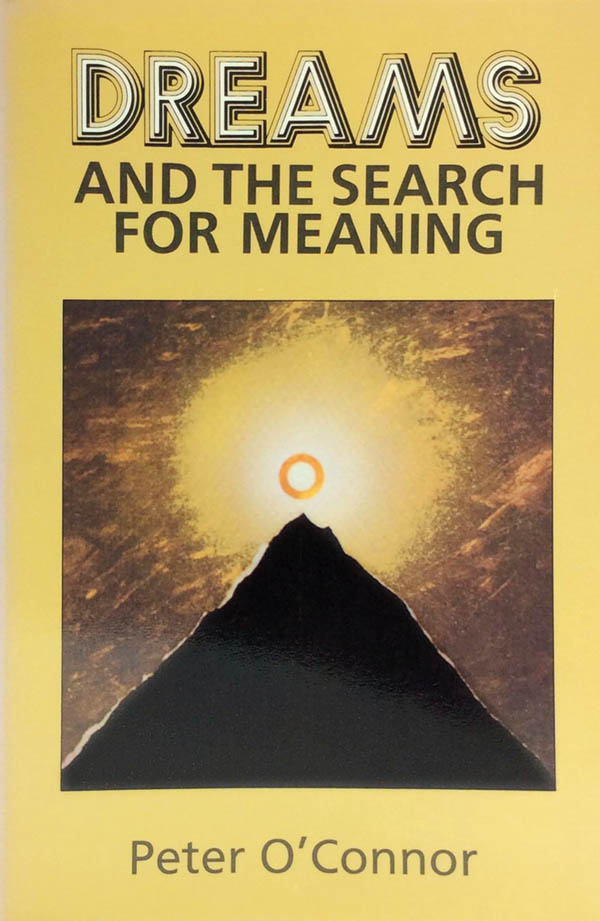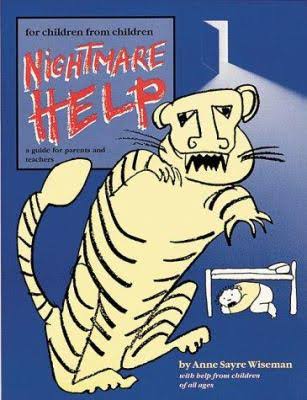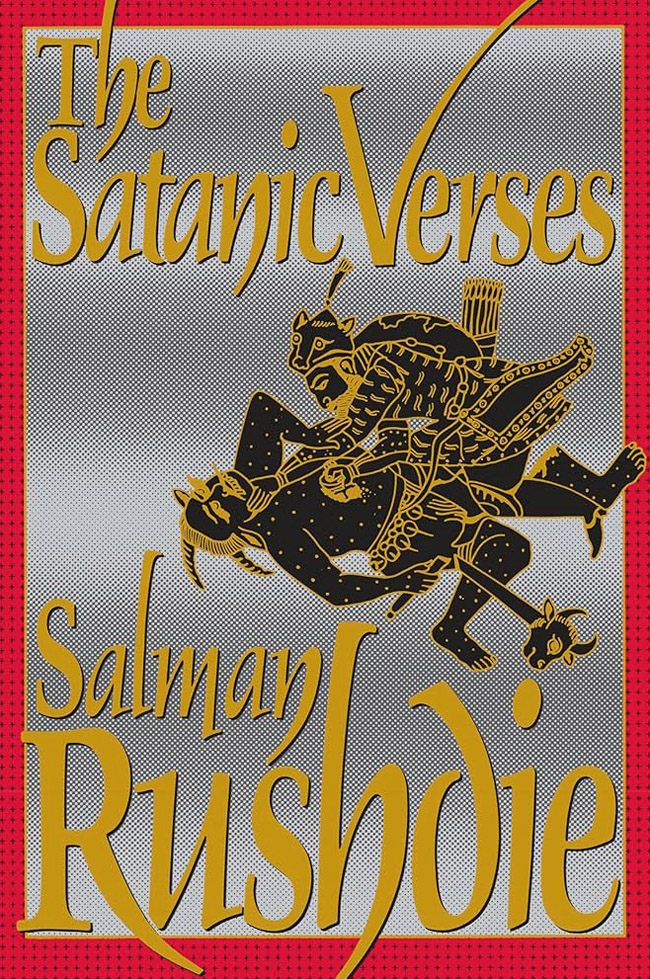"The Stuff dreams are Made of" by Sharon Bagley, and "Dreams on the Couch", by David Gelman: Newsweek, 8-14-1989 pg.40-46
One afternoon last summer, as I waited in the checkout line of a local market, holding a deli sandwich and gazing aimlessly at the magazines, I suddenly saw something that amazed me: there, in big letters, was a cover proclaiming "Dreams - New Lessons From the Theater of the Mind". And then I did a big double-take, for this was not the cover of The National Enquirer, but of Newsweek, one of the country's most respected and widely-circulated news magazines!
I grabbed a copy instantly and practically ran out to the park to read it. Forgetting my sandwich entirely, I opened up the magazine to see if it was really true: could they have written a cover story all about dreams? Sure enough, there at the top of the table of contents was the bold caption "Unlocking the Mysteries of Dreams" and a description of the articles. I laughed aloud... the dreamwork movement has really hit the big-time! Here are articles that millions of people will read, put together by a highly professional publication and given the tremendous status of a cover story.
Along with a wave of excitement, however, I felt an undertow of concern as well. "New Lessons from the Theater of the Mind"... I've always been hesitant to compare dreams to theater because in a culture like ours, which dismisses art as a pleasant but insignificant escape from "real" life, such a comparison can carry unwanted meanings1. "Unlocking the Mysteries of Dreams"... the use of key and lock imagery to describe dreamwork also disturbs me; it suggests an intrusive, aggressively masculine approach.2
As I continued to read the table of contents blurb, the worry wrinkles on my forehead grew deeper and deeper. The little paragraph began, "The act of dreaming is so basic a part of man's evolutionary heritage that it can be traced back 135 million years"... given that so many women are involved in dreamwork, this sexist language can only indicate a distorted and incomplete vision of the dreamwork movement as a whole. "But now modern science is finally deciphering... and harnessing... this nocturnal theater of the mind. Even executives are asking their dreams to solve their problems"... more language of domination and exploitation, calling up the image of yoking a beast of burden. And then, oh no, the idea that dreams are profitable!
I found that Newsweek had broken the story into two articles, the first focusing primarily on the work of sleep laboratory researchers and the second discussing the current status of dreams in psychoanalytic practice. By now my initial excitement had long been replaced by a mounting sense of disaster. Such a division of the story on dreams into two articles reinforces two of the worst public misconceptions about dreams: first, that sleep laboratory research and psychoanalytic therapy are the two important fields of dream study; and, second, that these two are best discussed separately, as independent approaches to dreams.
Before reading any further, I decided to put the magazine down for a moment. Eat my sandwich, try to relax a bit. OK, I said to myself, the articles aren't going to be perfect. I shouldn't expect them to be flawless or absolutely comprehensive. I'll just read them to see what the mainstream media finds most interesting about dreams. What do they want to know? What aspects of dreaming do the media highlight, and what aspects do they obscure, dismiss, or ignore? With my turkey and swiss safely entrusted to my digestive system, I began reading the first article, entitled "The Stuff That Dreams are Made of". The basic theme of this article is that dreams, once the province of "pop culture", have now become the object of legitimate scientific study. About half-way down the first page, the article comments "In the 1970s [dream] devotees launched newsletters and clubs whose members swapped dreams over herbal tea; they snapped up books that promised to reveal meanings as easily as looking up 'tunnel' in the index". (p.41) But, the article goes on, "what was a fad is now mainstream"; now serious, clearthinking people too have apparently decided that exploring dreams may have some value.
My resolve to stay calm just about evaporated right here; this slur against the grassroots dreamwork community almost made me toss the magazine out with my sandwich wrapper. In one sentence the author manages to imply that dream-sharing is merely the table chit chat of the natural foods set; that popular books on dreams are nothing more than deceitful, simplistic symbol dictionaries; and that the people who buy such books are gullible fools desiring instant dream interpretation gratification.
And then, what does the author offer as evidence that the exploration of dreams has gone "mainstream"? The fact that students in a "creative management" course at the Stanford Business School discuss dreams in order to solve business problems. Oh, I see: it's "progress" when fuzzy-headed New Agers are no longer the only ones talking about dreams because they have been joined by profit-seeking capitalists who use dreams as a new tool for beating the competition.
Should I go on with this? I eyed the distance between my bench and the nearest metal trash can. Twelve, maybe fifteen feet. I bet if I crumpled the magazine into the sandwich wrapper and put a good back spin on my shot... No, I said to myself, don't do that. Just breathe deeply for a couple of minutes, try to regain some degree of equanimity. Maybe the best way to get through these articles would be to think of them as indicating challenges for the dreamwork community. According to this article, dreamwork goes along with various other strange, counter-cultural activities; so, our challenge is to show how dreamwork is a valuable activity regardless of one's politics or taste for tofu. Likewise, the article suggests that popular books on dreams are simplistic how-to manuals for the psyche; well, we must promote those books that address a general audience and yet that offer a more sophisticated approach to understanding dreams3. It seems that many people first look to dreams in the hope of gaining as a reward something tangible; we need to nurture this hope and show people that a "tangible" gain is not always a financial profit.
Once past this terrible introduction, I found that the first Newsweek article does provide a pretty good summary of current scientific research on dreams. The work of J. Allan Hobson, Milton Kramer, Rosalind Cartwright, David Foulkes, Ernest Hartmann, Robert Smith, and Stephen LaBerge all receive accurate and complimentary descriptions. I was pleased to see that the article devotes a total of five or six paragraphs to Gayle Delaney and her approach to personal dream interpretation. Once again, she displays her great ability at communicating to a broad audience some of the most basic ideas of dream interpretation. While Delaney's method may not be especially innovative, she is the most effective spokesperson for the dreamwork community and deserves credit for that.
I had stopped fantasizing about slam dunking the Newsweek into the trash can; this first article hadn't turned out to be so bad. The author concludes that all the progress in scientific knowledge about dreams does not imply that dreams are merely the random firings of neurons without any meaning whatsoever; in other words, the study of brain physiology and the interpretation of meaning are compatible. Hallelujah! If the article has no other effect on the public attitude toward dreams, we can hope that it will be this: that "science" is no longer determined to denounce the meaningfulness of dreams.
The second article, "Dreams on the Couch", faced a more difficult task than the first. While it's a fairly straightforward matter to string together the greatest hits of sleep laboratory research (as the first article does), it's much harder to describe clearly in a short space the process of interpreting dreams. The author of this second article chose to discuss the ideas of two psychoanalysts whose approaches to interpreting the dreams of their patients diverge from orthodox Freudian theory. Both of these analysts reject Freud's insistence that the true meaning of a dream is disguised wish intentionally hidden from consciousness. Harry Fiss describes how the meaning of a dream is not hidden, but is rather expressed in the special metaphorical language of the unconscious. The other analyst, Edward Brennan, believes that it's not the wish that is important so much as how the dreamer behaves in the dream, i.e. the "defenses" he or she uses. Thus when a woman patient reported a nightmare to him, Brennan focused less on who is chasing her then on how specifically she struggles against her attacker.
This second article ends with an expression of respect for the often indescribable beauty of dreams, for their poetic, uncanny, fascinating powers. Again, I could only be pleased with such a conclusion, for it makes clear that dream interpretation is not a matter of reducing the dream contents into this or that hidden meaning. Whereas the first article contributes to a new public understanding that scientists no longer believe dreams are "nothing but" random brain activity, the second article makes it clear that psychoanalysts no longer believe dreams are "nothing but" disguised sexual or aggressive wishes.
I finished reading the two articles and decided to stretch my lunch break a bit longer by walking over to the lake. As I strolled I began to think about what the articles left out. What didn't get reported? Who wasn't interviewed? The more I thought about this, the more I realized how limited the public understanding of dreams and dreamwork still is.
To begin with, the only people to whom the authors spoke were professional academics or psychologists-and all of them from the U.S. There was no discussion of the vast numbers of people working with dreams in various community contexts. There were no interviews with the many talented and knowledgable dreamworkers who aren't affiliated with a university and who aren't doctors. There was no comment on the incredible discoveries made by recent anthropological studies of dreams in other cultures.4 There was no reflection on the exploration of dreams as a spiritual process, or as a source of artistic creativity. There was no consideration of dreamwork as a social movement, beyond the dismissive "fad" comment early on.
In short, the two articles failed to report on vast areas of the study and exploration of dreams. True, we must thank Newsweek for making a big contribution to the general public interest in dreams, first simply by putting the story on its cover and second by accurately describing important changes in the attitudes of scientific researchers and of psychoanalysts. But still, I feel there's much to disappoint us in these articles. They support the common assumptions that only scientists and psychoanalysts have anything important to say about the field, and they ignore the many exciting developments that have emerged out of other approaches to dreams.
1 Nevertheless, this comparison of dreams to a theater is one of the most popular among modern dreamworkers. It can be found in the works of Carl Jung, Calvin Hall, and Gayle Delaney, among many others. If, however, we could raise the status of art as an important, meaningful realm of experience that is intimately related to the" real" world, the comparison of dreams with theater (or with poetry, or film, or dance, etc.) could become an adequate, indeed a powerful metaphor.
2 Consider, for example, Freud's comment regarding his bullying treatment of Dora, a young female patient, that "the case has opened smoothly to my collection of picklocks" (Dora: An Analysis of a Case of Hysteria (New York: Collier Books, 1963), p.7. - and then his later comment that "is not 'jewelcase' a term commonly used to describe female genitals that are immaculate and intact?" (p. 111)
3 I would include among this group of books Dream Work, by Jeremy Taylor; Let Your Body Interpret Your Dreams, by Eugene Gendlin; Working with Dreams by Montague Ullman; and Living Your Dreams by Gayle Delaney. These are my favorites, anyway.
4 For example, the research gathered by Barbara Tedlock in her book Dreaming - Anthropological and Psychological Interpretations (Cambridge, Eng. Cambridge U Press. 1987).
















